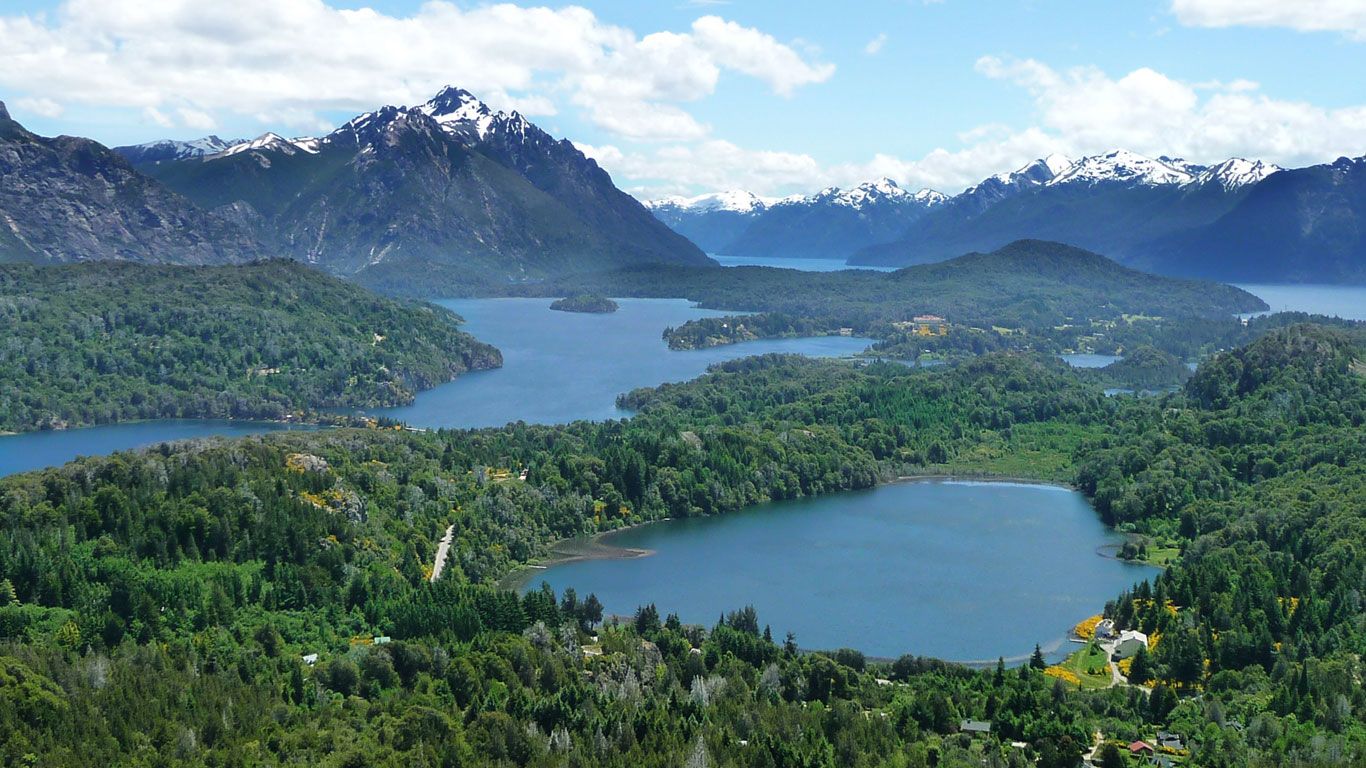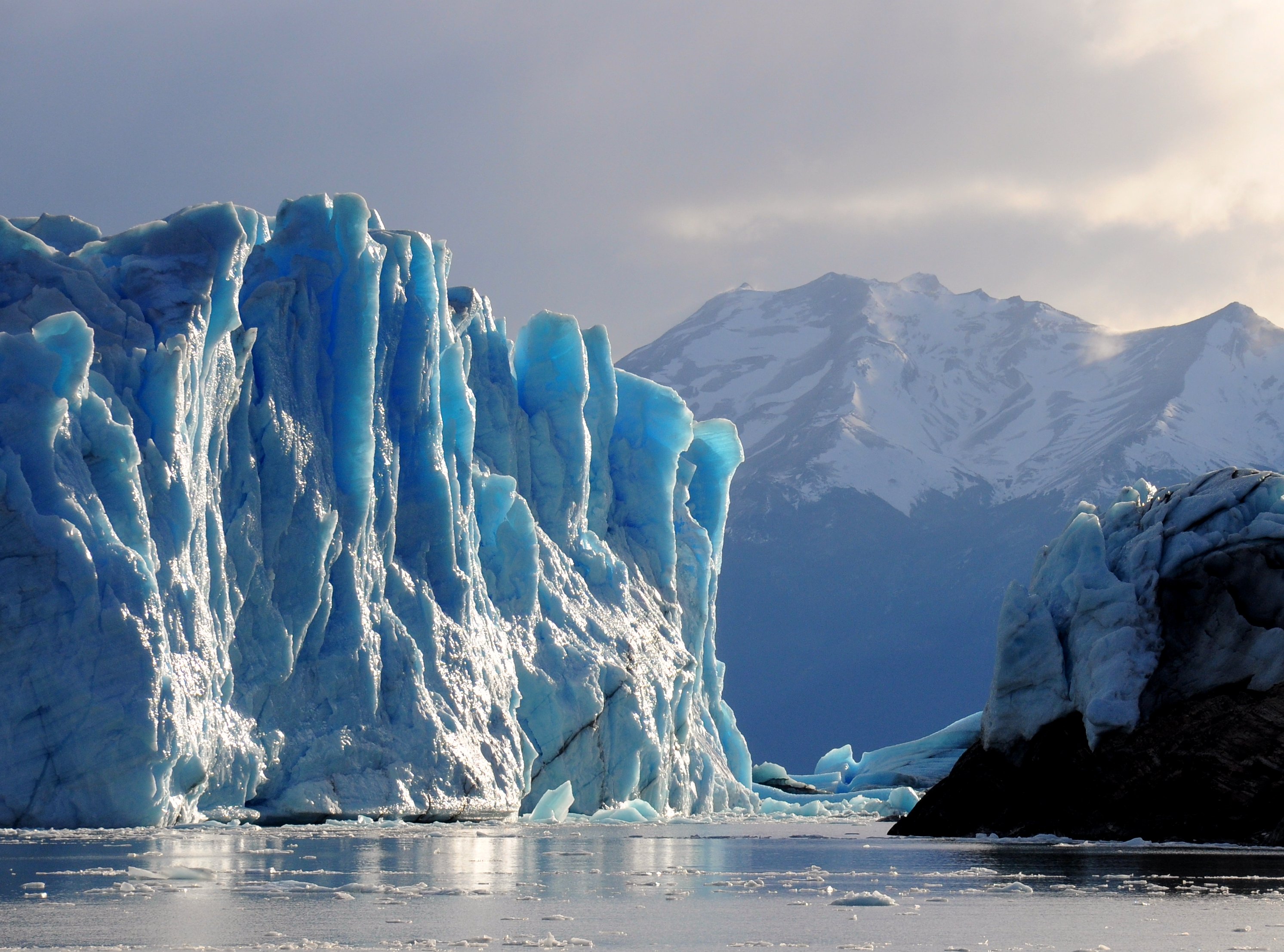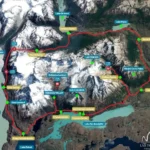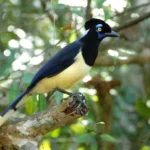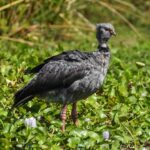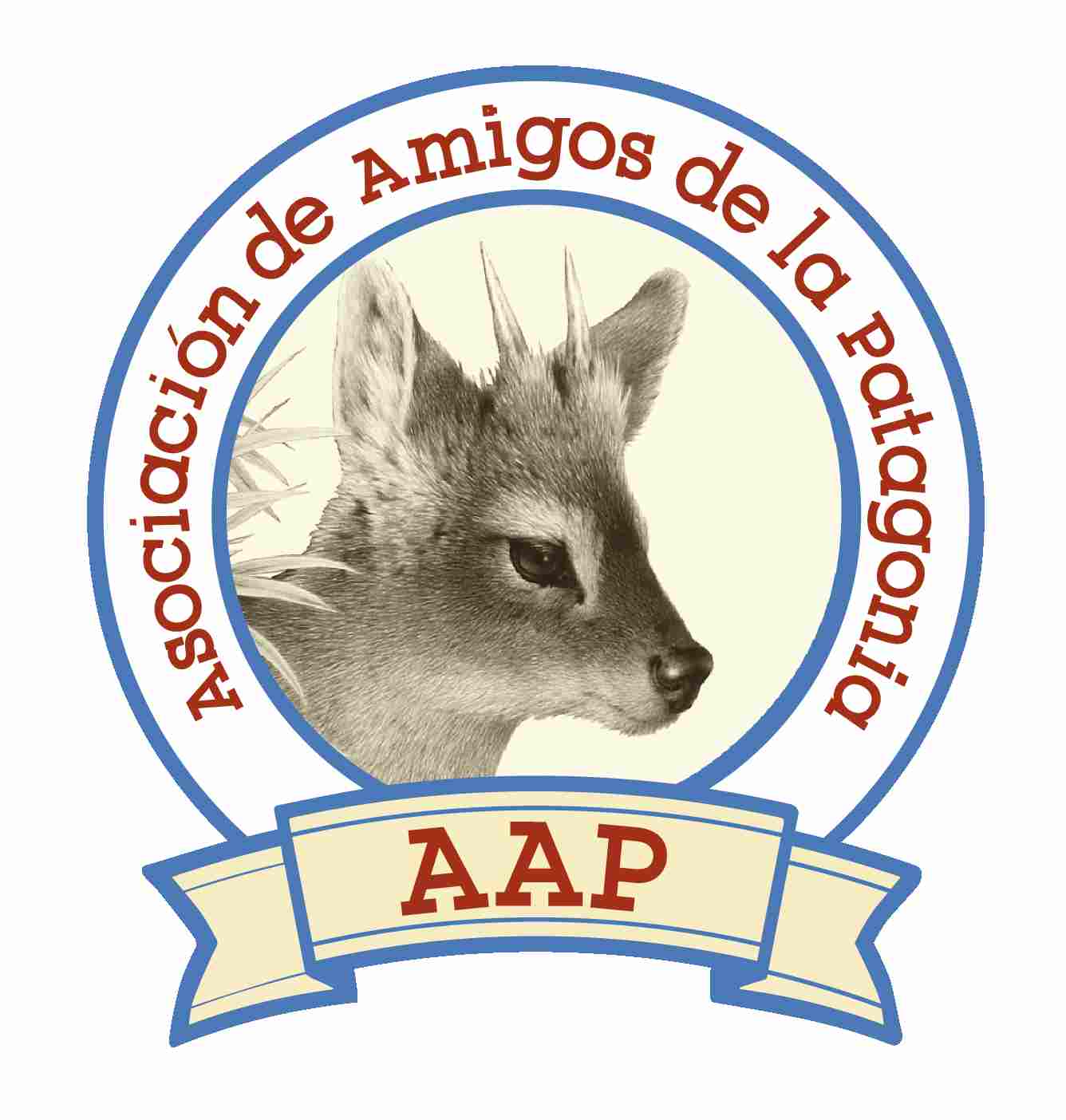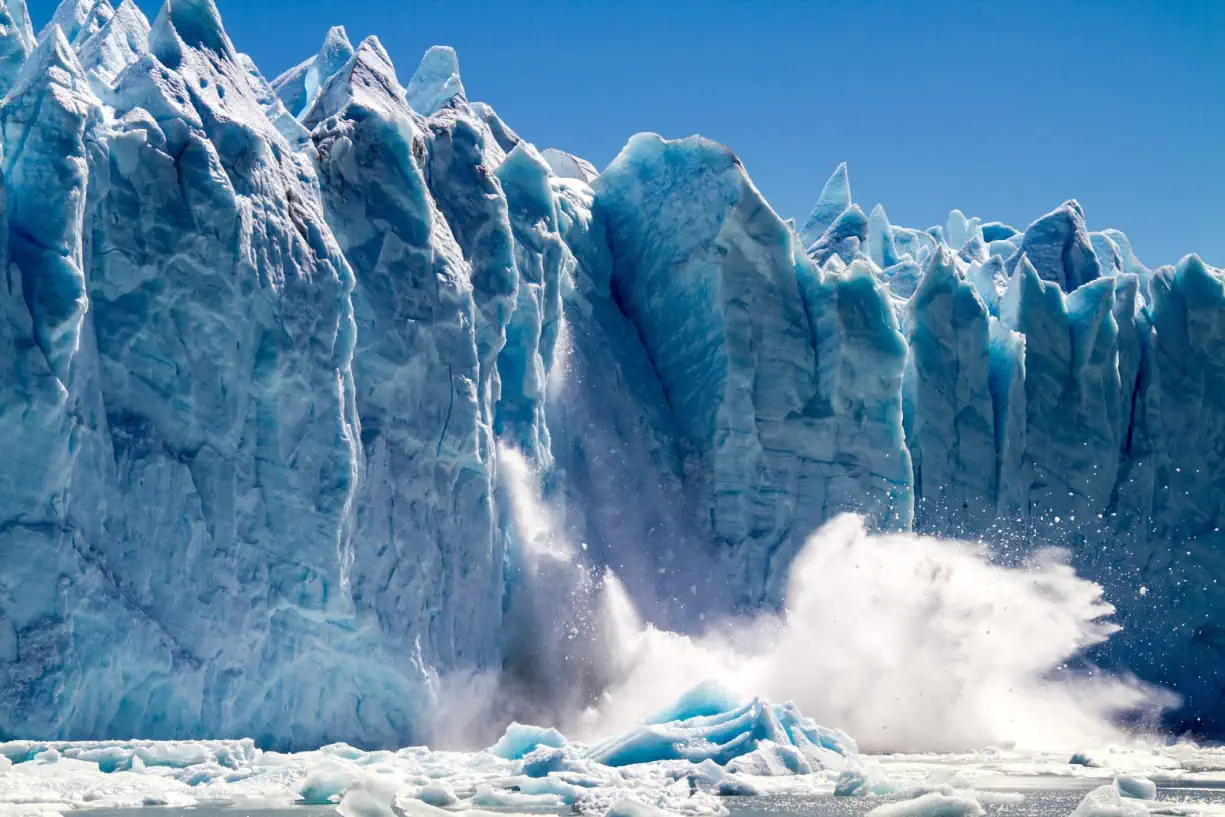
Patagonia: the southern end of the Americas.
Patagonia is an extensive territory shared by Argentina and Chile. Nature and wildlife are the words that describe best this region. It is a wide territory with many different landscapes that include mountains, glaciers, deserts, steppes, and even jungles, all of them surrounded by three different oceans: Atlantic, Antarctic, and Pacific.
The region can be visited in every season. But there are specific moments of the year where amazing unique things can be seen. Below is a brief description of the “must do” when traveling through Patagonia Argentina and the combination with the Chilean side.
1. Bariloche and the Lake District
In northern Patagonia, Route 40 goes through one of the most famous areas of Patagonia Argentina: The Lake District. This section is popularly known as the seven lakes road but on the area there almost 15 lakes. The main cities on the area are Bariloche, one of the most important hubs of Patagonia Argentina, Villa La Angostura, and San Martin de Los Andes. In this are there are 3 National Parks that can be visited: Nahuel Huapi, Arrayanes and Lanin.
Trekking, skiing, snow activities, golf, mountaineering, sailing, canopy, rafting, kayaking, fishing and horse riding are only some examples of possible outdoor activities in the Lake District.
Although the area can be visited every season we recommend to visit during late spring and summer when it’s possible to swim in the lakes and do water sports. Regarding the trekking, only in winter, it is impossible to know whether the trails will be open or not because of the snow. In winter the area is also beautiful and it has 3 ski resorts: Cerro Catedral, in Bariloche, Cerro Bayo, in Villa La Angostura and Cerro Chapelco near San Martin de Los Andes. The temperature in summer is between 15°C and 30°C and in winter between 0°C and 10°C. We suggest staying at least 3 or 4 nights to really enjoy the area.
2. Penguins and whale watching: Puerto Madryn, Peninsula de Valdes & Punta Tombo
Wildlife is the main attraction of this area of Patagonia Argentina. The fauna in this area includes southern right whales, penguins, dark dolphins, killer whales (orcas), elephant seals, sea lions, a wide range of birds and other land-based species such as Darwin’s Rhea, Patagonian Mara, foxes, and guanacos. It is important to take into account when planning a trip to this area is that the best time of the year to visit is between September and November because you can find Penguins and Southern Right Whales together. This area is a unique reservoir of natural wildlife and that’s why it was named Natural World Heritage by UNESCO.
Another important place to visit from Puerto Madryn is Punta Tombo, a natural protected area where the Patagonic steppe meets the Argentine sea and is where Penguins, mostly Magellanic, choose to make their nests and breed their baby penguins. This is one of the biggest penguin colony in the country. The beach where they stay for months has a length of 3 km and 600 meters wide, and when visiting you walk through the penguins and their nests. The experience is amazing.
The temperature in Puerto Madryn during the summer is between 11°C and 29°C and it is really dry while in winter it’s windy, cloudy and the temperatures go from 2°C to 15°C. We suggest staying at least three nights in Puerto Madryn and doing a day excursion to Peninsula Valdes and another to Punta Tombo.
3. Land of glaciers and trekking: El Calafate, El Chalten, and Torres del Paine (Chile)
The Trekking Capitals of Argentina and Chile are well connected with a mandatory stop to see the Perito Moreno Glacier.
The main airport of the area is in El Calafate, from here is really easy to get a transfer to El Chalten. This city is considered the Argentinian Capital of Trekking. It has a lot of self-guided trails, most of them well connected and with the possibility of spending the night on campings. You can’t miss the trails to Cerro Torre, Fitz Roy and Loma del Pliegue Tumbado (ordered from lower to higher difficulty).
In El Calafate, the main attraction is the Perito Moreno Glacier, an amazing natural wonder of Patagonia Argentina, located on Los Glaciares National Park. There are also other glaciers to visit in the area like the Viedma Glacier, the biggest in Argentina and the second in the southern hemisphere, the Upsala Glacier and Spegazzini Glacier. Another interesting option is to visit the Estancias of the area, and getting to know how the first pioneers and immigrants of the area lived.
From El Calafate, Argentina, or Punta Arenas, Chile, you can get to Torres del Paine National Park in 5 hrs. Also, you can get there from Puerto Natales, Chile, in 2 hrs. The options from El Calafate are Full Day excursions or staying there as many nights as you want to enjoy the park.
We recommend staying at least two complete days in each place. The climate is very similar in each city or park. In summer the weather is dry, sunny, cool and windy, the temperature in goes from 5°C to 20ºC. Winter is the rainy season and temperature goes from -5ºC to 5°C. The length of the day varies a lot according to the time of the year: in summer you can enjoy about 17 hours of daylight and the shortest day in winter has nearly 8 hours of daylight.
4. The end of the world: Ushuaia
Best known as the southernmost city of the world, Ushuaia has many activities to offer. It is a Tax-Free city, located on Tierra del Fuego Island, which is the industrial and touristic port and hub of the area. Tierra del Fuego Island is divided by half. The eastern side is part of Patagonia Argentina and the western side is Chilean Patagonia.
Ushuaia is one of the newest cities in Argentina. It was founded in 1889 to divide the territory from the Chilean side. The city had an extreme climate, that no citizen from the center and north Argentina was used to, so the presidential government decided to establish there a maximum security penitentiary, where now stand the Maritime Museum and the Penitentiary Museum where you’ll find wax sculptures of Argentina’s most dangerous criminals and their stories.
On the surroundings, there are many activities to do. Tierra del Fuego National Park, founded to preserve the Subantarctic forest, is a great option to do both half day or a full day. If you wish to board the End of the World Train we recommend to do a full day excursion. On Lapataia Bay, inside the National Park, you’ll see the end of the Pan-American highway, a connection of different national routes that go from Alaska to Ushuaia.
It is also nice to visit Lake Fagnano and Lake Escondido. By taking the Pan-American highway you reach these lakes where you can do different activities like hiking, fly-fishing, and kayaking to enjoy the area. From Ushuaia, you may also visit Emerald Lagoon, with a two-hour trekking each side.
Navigations from the port of Ushuaia are the most famous activities. We recommend the Beagle Channel Navigation. There are different tours to Beagle Channel, some of them include navigating around Les Éclaireurs Lighthouse, visiting the Bird and Sea Wolves Islands, Martillo Island, in Estancia Harberton where you’ll be able to walk among penguins. Also, another activity that we recommend is King Crab fishing on the shores of the Beagle Channel.
From Ushuaia, you can also star a cruise of four days which navigates through the Beagle Channel, Cape Horn and the Chilean Fjords. This cruise ends in Punta Arenas, the main city of the southern Chilean region.
Temperatures in this area are low. In Summer it goes from 6°C to 23°, days are really long, you can have almost 18 hours of light: the sun rises approximately at 3:54 AM and it sets at 11:10 PM. In winter it goes from -15°C to 3°C and days are really short, the sun rises approximately at 9:15 AM and it sets at 5:57 PM but the days are usually bright.
5. Rest of Patagonia
One option is road tripping famous 40th Route that goes parallel to the Andes Range. This route is divided into different sections. In Patagonia Argentina, it has three important sections besides the Seven Lakes and El Calafate to El Chalten.
At northern Patagonia Argentina from Chos Malal or Naunanco, you can take an exit of this route and visit Caviahue and Copahue, two small villages where there is thermal activity because of an active volcano that can be visited in a guided tour and there is also a ski resort. Going back to route 40, taking an exit in Las Lajas or Zapala, you can visit Villa Pehuenia, an amazing little town lost between mountains and Araucarias.
After the Seven Lakes section, there is an amazing corridor that connects in round trip El Bolson, Esquel and Los Alernces National Park. In El Bolson you can visit hop plantations and the famous craft fair. Also, Puelo Lake is a great option to spend a free afternoon. Esquel is an important stop when entering or leaving the National Park. In Los Alerces National Park we recommend the Rivadavia, Verde and Futalaufgunen Lakes.
Another important place you can visit by doing route 40 is Los Antiguos, a town that has great access to visit the Cueva de las Manos, Patagonia Argentina, and also you can connect with the Carretera Austral (Chile) and see the Marble Cathedrals in Chilean Patagonia.
National Route 3 is also an important corridor and has more to offer than just Puerto Madryn and Punta Tombo. It starts in the City of Buenos Aires and ends in Bahia de Lapataia, Ushuaia.
Puerto Deseado is a great place to make a stop. From here you can visit Penguin Island, the Ría Deseada, a unique place on earth where the sea has taken over 40 km of the common river of the same name, and an area of petrified woods. Also, on your way to Ushuaia, you can visit Monte Leon National Park, Argentina’s first national park that preserves sea wildlife.
It is important for you to know that to get to Ushuaia by car you’ll need to cross part from the Magallanes region of Chile and sail through the Strait of Magellan.
By Morena Domsch – Beyond BA LATAM team
We invite you to discover the best places in Patagonia Argentina. Click here to see some tour examples.
Beyond BA LATAM offers tours and experiences for all these alternatives, where we stand out in tailor-made vacations, designed around your interests and travel style. Contact us, learn about more things to do in Argentina, and let’s plan your next beautiful journey together!





